PMC/PubMed Indexed Articles
Indexed In
- Open J Gate
- The Global Impact Factor (GIF)
- Open Archive Initiative
- VieSearch
- International Society of Universal Research in Sciences
- China National Knowledge Infrastructure (CNKI)
- CiteFactor
- Scimago
- Ulrich's Periodicals Directory
- Electronic Journals Library
- RefSeek
- Directory of Research Journal Indexing (DRJI)
- Hamdard University
- EBSCO A-Z
- Publons
- Google Scholar
Useful Links
Share This Page
Journal Flyer

Open Access Journals
- Agri and Aquaculture
- Biochemistry
- Bioinformatics & Systems Biology
- Business & Management
- Chemistry
- Clinical Sciences
- Engineering
- Food & Nutrition
- General Science
- Genetics & Molecular Biology
- Immunology & Microbiology
- Medical Sciences
- Neuroscience & Psychology
- Nursing & Health Care
- Pharmaceutical Sciences
Original Research Article - (2020) Volume 10, Issue 5
The Study of Infectious Hospital Waste Management in Two Hospital of Pakistan
Khurram Riaz*Received: 24-Sep-2020 Published: 06-Nov-2020, DOI: 10.35248/2252-5211.20.10.389
Abstract
The Infectious hospital waste management practices in hospital PNS Hafeez Hospital and PAF Hospital Islamabad, Pakistan in the light of environmental laws and hospital waste management rules. Data were collected using various methods such as survey questionnaires, interviews, group discussions informal, site observation, photographic documentation to study the current Infectious hospital waste management system and practices. Studies revealed many discrepancies and weaknesses in the hospital waste management system. The survey results showed that segregation of all wastes was not conducted according to standards rules and regulations. waste management team was not effective even the team member was not aware about environmental laws and standard waste management practices. Waste handling was also not according to the guideline provided by environmental laws. No protective clothing, gloves, masks were provided to waste management workers. Waste management team, doctors, nurses; sanitary staffs were not trained in dealing with hospital waste. It was concluded that the unsatisfactory current hospital waste management practices in both hospitals were mainly due to the lack of training, lack of awareness, and lack of knowledge of hospital waste management rules and laws.
Keywords
Hazardous; Toxic; Lethal; Hospital; Colour coding
Introduction
Infectious hospital waste is a particular type of hospital waste produced inlow quantities which can cause high level of infection andinjuries. Infectious hospital waste is considered dangerous because it may possess pathogenic agents and can cause undesirable effects on human health and the environment [1].
Poor handling may have seriouspublic health effect and the significant impact on the environment [2]. Infectious hospital waste management means the management of Infectious waste produced by hospitals using techniques that will check the spread of diseases [3]. In developing countries, awareness of hospitals waste management in terms of its segregation, collection, storage, transportation, and disposal [4-6].
The main reason for the mismanagement of these wastes is the lack of appropriate legislation and effective control; other reasons are financial strains and a lack of awareness. Studies show that around 0.341 Kg of Infectious waste per bed per day is produced [7].
Hospital wastes involve hazardous or risk waste and non-risk waste. The different types of risk wastes are infectious waste, pathological waste, sharps, pharmaceutical waste, genotoxic waste, chemical waste, and radioactive waste. The non-risk waste comprises of other types of garbage like foodstuff leftovers, cardboards, packages, etc [8].
Meeting the legal and regulatory requirements to generate, use, store, treat, and disposing are difficult. Although the regulations are extensive and complex to implement, but complete and documented compliance with the applicable regulations is essential to demonstrate that personnel and environment safety has been assured (Hospital waste management in Pakistan 1997) [9]. Hospitals should prepare their own policies and measures for waste handling [10].
In the hospitals of KPK incineration is carried out, apart from a few most hospitals make use of shift incinerators that operate at lower temperatures releasing noxious gases into the environment making it a great environmental hazard. “Hospital waste management rules 2005” notified by the Federal Government of Pakistan under the Environmental Protection Act 1997 clearly state that a proper storage facility should be present in the hospitals and the waste management operation (WMO) should oversee the correct use of such a facility and ensure correct method of transportation of waste, of the hospitals and recording of waste transportation.
Methodology
Study area
Study conducted in Islamabad, Pakistan and was selected because it is the capital of Pakistan but still number of health issues emerged during the last couple of decades. luckily, there are many government hospitals in the city, and there are many private hospitals. Due to overpopulation, as Rawalpindi people also came in this city for medication, huge amount of infectious waste is generated, and which is not properly dumped. Therefore, this city was selected. To get the information about hospital waste management, interviews with hospital staff, management and medical students have been conducted. These interviews were conducted in two government hospitals. Names of these hospitals are PNS HAFEEZ hospital and PAF hospital UNIT 1 located in E-8 and E-9 respectively. They are 3.0 km away each other (Figure 1).
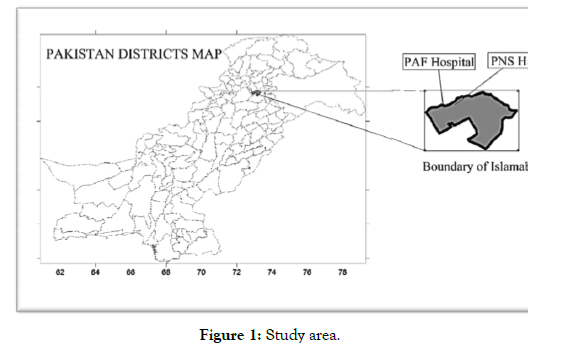
Figure 1: Study area.
Data collection and analysis
Data is collected using various methods such as survey questionnaires, interviews, group discussions informal, site observation, photographic documentation to study the current Infectious hospital waste management system and practices. These practices were separation/segregation, collection/ storage, transportation, treatment, recycling, and final disposal. Waste management team, environmental management office, implementation of rules, training to staff in the light of guidelines provided by the Pakistan Environmental Protection Act 1997 and Hospital Waste Management Rules 2005.
Survey questionnaires
Besides using interviews, group discussions informal, site observation, photographic documentation, survey questionnaire is used as a tool to collect data from the hospitals community The purpose of the survey questionnaires research was to examine and identify the awareness among the hospital community and their level of knowledge.
A survey questionnaire with 20 questions was developed as part of field investigation. A total of 50 questionnaires equally distributed to hospital personnel / healthcare workers such as doctors, nurses, pharmacists, waste handlers and medical laboratory scientists. Therefore, the participants from various waste generating and handling such as medical, surgical, paediatrics wards, gynaecology, ICU, , the theatre, blood bank, chemical pathology, bacteriology/ parasitological, histopathology laboratories, the HIV care unit, waste handling unit and the compounding or dispensing pharmacy units were selected.
Interviews
Interviewing is common practice of data collection from participants in research activities. A list of questioned was developed and asked from the participants to share their opinion about Infectious wastes management practices and their inputs. The interviewees were questioned based on their responsibility and familiarity with hospitals waste management (Figure 2 and Table 1).
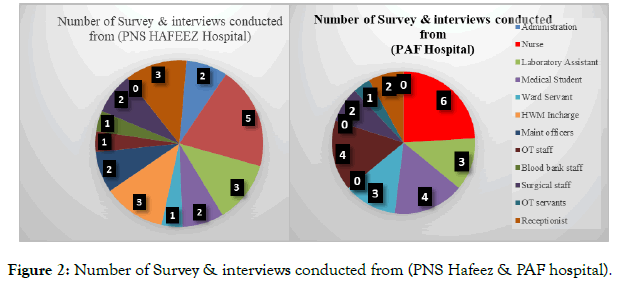
Figure 2: Number of Survey & interviews conducted from (PNS Hafeez & PAF hospital).
Table 1: Number of Survey & interviews conducted from bothhospital's staff members.
| Departments | PNS Hafeez Hospital | PAF Hospital |
|---|---|---|
| Administration | 2 | 0 |
| Nurse | 5 | 6 |
| Laboratory Assistant | 3 | 3 |
| Medical Student | 2 | 4 |
| Ward Servant | 1 | 3 |
| HWM In charge | 3 | 0 |
| Maint officers | 2 | 0 |
| OT staff | 1 | 4 |
| Blood bank staff | 1 | 0 |
| Surgical staff | 2 | 2 |
| OT servants | 0 | 1 |
| Receptionist | 3 | 2 |
| Total | 25 | 25 |
Results and Discussion
In both hospitals, through interviews and personal observation we found that almost every type of Infectious hospital waste is producing in these two hospitals. Types of infectious waste generated in these two hospitals are mentioned in Table 2.
Table 2: Types of waste produced in PAF and PNS Hafeez Hospitals.
| Infectious hospital waste | PNS Hafeez Hospital | PAF Hospital |
| Disposable syringes, | Disposable syringes, | |
| Organs, Tissues, Pus, | scissors, Blades, | |
| Urine bags, Glucose | Urine bags, | |
| Bandages, dressings, | Blood bags, | |
| Blades | Bandages, dressings, | |
| Infusion-tubes, | organs, Tissues, Pus, | |
| Plastic bottles etc. | Empty glass vials, | |
| Empty glass vials, | Infusion-tubes, | |
| Glucose | Plastic bottles etc. |
Waste generation rate
The Quantity of infectious waste generated in PNS Hafeez hospital in E-8 Islamabad is as shown in Table 3 represents quantity of Infectious waste produced by each department per day. The results indicate that the infectious waste generation rate was approximately 55 kg/day.
Table 3: Quantity of Infectious waste generated in PNS Hafeez hospital /per Day.
| No | Number of infectious wards/Units | PNS Hospital Waste kg/day | PAF Hospital Waste kg/day |
|---|---|---|---|
| 1 | Patient services | 12 | 12 |
| 2 | Medical | 0.5 | 4 |
| 3 | Surgical | 0.5 | 6 |
| 4 | Operating Theatre | 9 | 22 |
| 5 | Recovery care | 2 | 5 |
| 6 | Isolation ward | 0 | 3 |
| 7 | Emergency | 13 | 16 |
| 8 | laboratories | 3 | 18 |
| 9 | Research | 0 | 6 |
| 10 | Blood bank | 15 | 3 |
| Total | 55 kg | 95 Kg |
The data from Table 3 is represented in the form of Figure 3, which shows that the total quantity of Infectious waste produced in PNS Hafeez hospital was 55 kg per day. The highest quantity of Infectious waste generated belongs to Emergency ward which was 27.2% and 23.6% of infectious waste contributed by laboratories. In Surgical ward and Medical ward Infectious waste was almost 0.9%. Operating Theatre generated 16.3% Infectious wastes. Recovery care contributed 3.6% Infectious waste. Blood bank produced 3.67% infectious waste. The remaining wards Isolation ward, Dialysis unit, Oncology unit, Outpatient clinic, Autopsy room, Radiology, Pharmacy, Administration and Laundry does not generate any Infectious waste in the PNS Hafeez hospital. These results revealed that the highest quantity of waste generated by Emergency and Laboratories. Surgical ward and Medical ward were the least contributor of Infectious hospital waste.
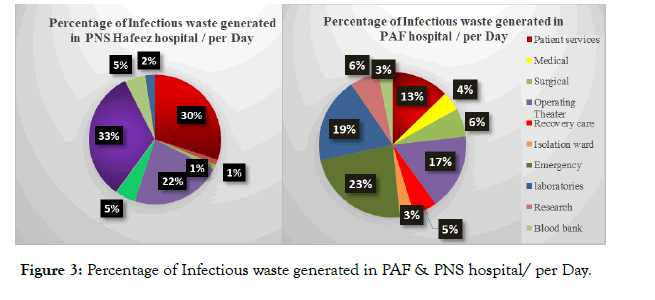
Figure 3: Percentage of Infectious waste generated in PAF & PNS hospital/ per Day.
The Quantity of infectious waste generated in PAF hospital in E-9 Islamabad is as shown in Table 3. Represents quantity of Infectious waste produced by each department per day. The results indicate that the infectious waste generation rate was approximately 95 kg/ day.
The data from Table 3 is represented in the form of Figure 3, which shows that the total quantity of Infectious waste produced in PAF hospital was 95kg per day. The highest quantity of Infectious waste generated belongs to which was Operating Theatre 23.1% and 18.9% of infectious waste contributed by laboratories. In Surgical ward and Medical ward Infectious waste was almost 6.3% & 4.2% respectively. Emergency ward generated 16.8% Infectious wastes. Recovery care contributed 5.2% Infectious waste. Blood bank produced 3.1% infectious waste. The remaining wards Dialysis unit, Oncology unit, Outpatient clinic, Autopsy room, Radiology, Administration, kitchen, public area, and Laundry does not generate any Infectious waste in the PAF hospital. These results revealed that the highest quantity of waste generated by Operating Theatre and Laboratories. blood bank and isolated ward was the least contributor of Infectious hospital waste.
Questionnaire study participants
Questionnaire was proved to be useful to identify problems in the Infectious wastemanagement system, awareness among hospital community and their level of knowledge.
Following were the questions:
a. Hospital waste management team in hospital
b. The Figure 4 represents the knowledge of healthcare workers about the waste management teams both in PAF and PNS Hafeez. 85and 78% of healthcare workers reported that waste management team is present while 8 and 6% there is no waste management team,14 and 9% of people in PNS Hafeez have no idea about waste management team in PNS Hafeez and PAF hospitals respectively.
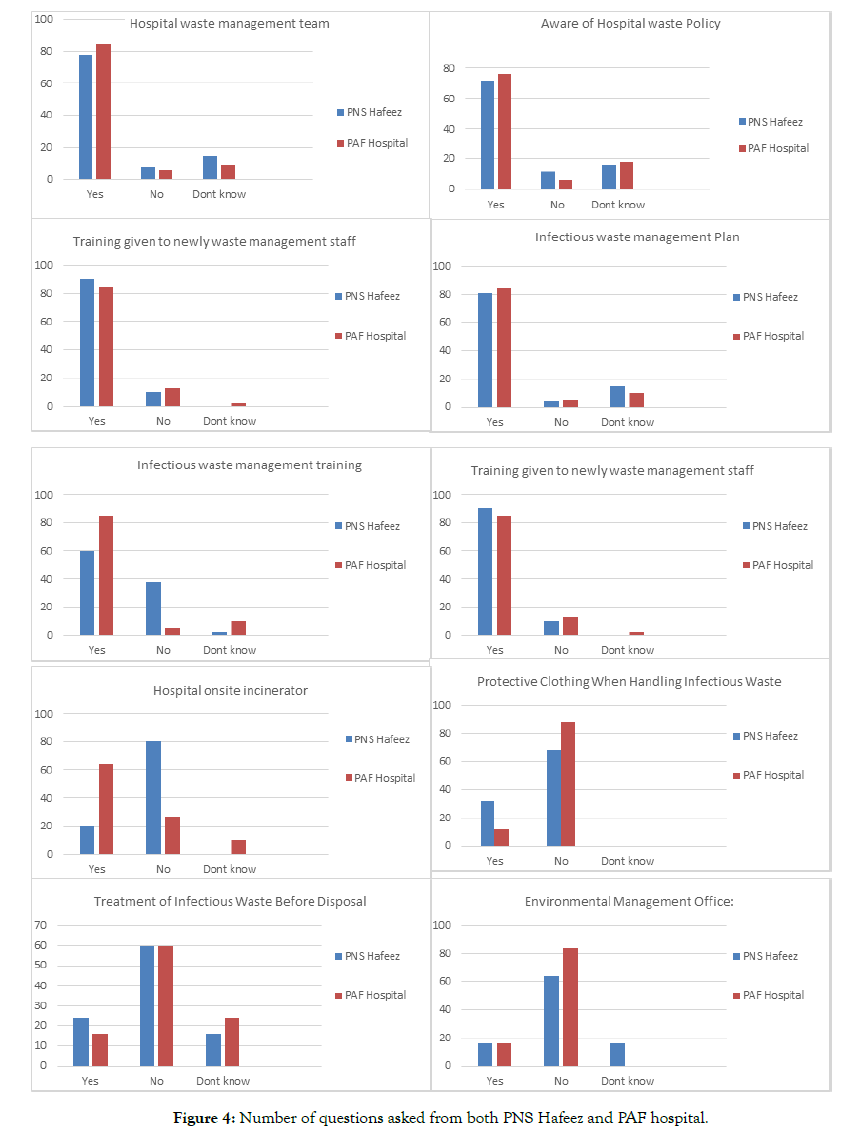
Figure 4: Number of questions asked from both PNS Hafeez and PAF hospital.
c. Aware of Hospital waste Policy
d. Figure 4 represents the Awareness of healthcare workers about the Hospital waste policy both in PAF and PNS Hafeez. 72 and 76%of healthcare reported that they aware about the hospital waste policy while 12 and 6% healthcare workers reflected that they don’t know about hospital waste policy and 16 and 18% of people in PNS Hafeez have no idea about Hospital waste policy in PNS Hafeez& PAF hospital respectively.
e. Infectious waste management Plan
f. The Figure 4 represents the knowledge of healthcare workers about the Infectious waste management plan bothin PAF and PNS Hafeez. 81and 85% of healthcare workers reported that waste management plan is present while 4 and 5% there is no waste management plan,15 and 10% of people in PNS Hafeez have no idea about waste management plan in PNS Hafeez and PAF hospitals, respectively.
g. Infectious waste management training:
h. The Figure 4 represents the knowledge of healthcare workers about the Infectious waste management training OR does they receive any infectious waste management training both in PAF and PNS Hafeez. 60and 80% of healthcare workers reported that they received Infectious waste management training while 48 and 15%do not. 2 and 5% of people in PNS Hafeez have no idea about waste management training in PNS Hafeez and PAF hospitals, respectively.
i. Training given to newly waste management staff
j. The Figure 4 represents the knowledge of newly waste management workers or staff about the Infectious waste management. 90and 85% of healthcare workers reported that they received Infectious waste management training while 10 and 13% there is no waste management training for new staff , 0 and 2% of people in PNS Hafeez have no idea in PNS Hafeez and PAF hospitals, respectively.
k. Do they know the procedures of collection and handling of infectious waste?
l. The Figure 4 represents the knowledge of healthcare workers about the collection and handling of infectious waste. 77 and 81% of healthcare workers reported that they have knowledge about collection and handling of infectious waste while 9 and 6% do not know 14 and 14% healthcare workers reflected that they have no idea about collection and handling of infectious wastein PNS Hafeez &PAF hospitals respectively.
m. Hospital on-site incinerator
n. Figure 4 shows the knowledge and awareness of the healthcare workers about the hospital on-site incinerator. 20 and 64% responded that incinerator plant is available, and 80 and 64% people reported that there was no incinerator plant installed in PNS Hafeez& PAF hospitals.
o. Protective Clothing When Handling Infectious Waste
p. Figure 4 shows the awareness of the health care workers about protective clothing when handling infectious waste. 32 and 12% people answered yes, they are using protective clothing when handling infectious wastes.while 68 and 88% were not using protective clothing when handling infectious waste in PNS Hafeez& PAF hospitals, respectively.
q. Treatment of Infectious Waste Before Disposal
r. Figure 4 shows the knowledge and awareness of the healthcare workers about the treatment of waste before disposal. 24 and 16% people answered that waste is treated before disposal and 60 and 60% people replied that waste is not treated before disposal. 16 and 24% people don’t know in PNS Hafeez & PAF hospitals respectively.
s. Environmental Management Office
t. Figure 4 shows the knowledge and awareness of the healthcare workers about environmental management office.16% people in both the hospital favoured the existence of the environmental management office. 64 and 84 % people denied about the present of environmental management office. On-site visits, photographic expressions, interviews, revealed that they did not find environmental management office in both the hospitals.
u. Figure 5 show that the staff does separate the Infectious waste from non-Infectious waste in wards of both hospitals. In PNS Hafeez hospital the Infectious waste is placed in Gray container with red plastic bag while in PAF hospital Red container is used to collect infectious waste, blue for non-infectious waste and yellow for Sharp waste.
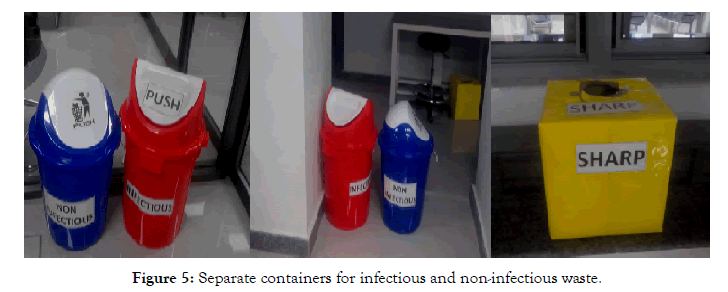
Figure 5: Separate containers for infectious and non-infectious waste.
Environmental law stresses on the color-coding containers to put segregated waste in them. This practice is done in both hospitals which they are following the environmental laws and regulations. Sharps (needles) which are highly fatal and infectious are placing in separate box with cutting needles in a yellow container waste bag using separate container. Then they are carried by sweepers without taking protective measures. They do not use gloves during segregation which is rarely done. Most of the time they pick both the Infectious and non-infectious waste from the container and put it into the trolley without using gloves and proper shoes.Sweepers collect the waste from all the containers from the wards and dump the waste at the central storage facility of the hospital where they separate the waste.
Conclusion
The main conclusions drawn from the study are as follows:
a. Both hospitals are following the environmental laws (HWM rules 2005) however waste management team was not effective even the team member have no awareness about environmental laws and proper collection, storage, transport, and disposal of waste.
b. In PNS Hafeez there was only one gray container for the collection of hospital waste with different bags.
The current hospital waste management practices are unsatisfying in both the hospitals mainly due to the lack of training and awareness, ineffective segregation, inadequate collection technique, unsafe storage of waste and lack of knowledge of hospital waste management rules.
REFERENCES
- Rudraswamy S, Sampath N, Doggalli N, Rudraswamy DS. Global scenario of hospital waste management. Int J Environ Res. 2013;3(3):143-6.
- Fluke C. Handling hazardous waste. J Healthc Manag. 1988;6(2):70-3.
- Rehman MU, Shahab S, Malik R, Azim W. A study of waste generation, collection and disposal in a tertiary hospital. Pak J Med Res. 2001;40:13-7.
- Ather S. Hospital waste management. Journal of the College of Physicians and Surgeons—Pakistan.2004:645-646.
- Patil AD, Shekdar AV. Health-care waste management in India. J Environ Manag. 2001;63(2):211-20.
- Uysal F, Tinmaz E. Medical waste management in Trachea region of Turkey: suggested remedial action. Waste Manag Res. 2004;22(5):403-7.
- Rasheed S, Iqbal S, Baig LA, Mufti K. Hospital Waste Management in theTeaching Hospitals of Karachi. JPMA. 2005;55:192.
- Hassan MM, Ahmed SA, Rahman KA, Biswas TK. Pattern of medical waste management: existing scenario in Dhaka City, Bangladesh. BMC public health. 2008;8(1):36.
- Horvath A. Management of waste disposal in medical institutions. Orvosihetilap. 1991;132(17):919.
- Hayashi Y, Shigemitsu M. Proper disposal (management) of medical wastes--infection prevention and waste management (Clean Hospital Project) at Hiroshima City, Asa Hospital. Rinshobyori. Jpn J clin Pathol. 2000:26-31.
Citation: Riaz K (2020) The Study of Infectious Hospital Waste Management in Two Hospital of Pakistan. Int J Waste Resour 10: 389. doi: 10.35248/2252-5211.20.10.389
Copyright: © 2020 Riaz K, et al. This is an open access article distributed under the terms of the Creative Commons Attribution License, which permits unrestricted use, distribution, and reproduction in any medium, provided the original work is properly cited.

